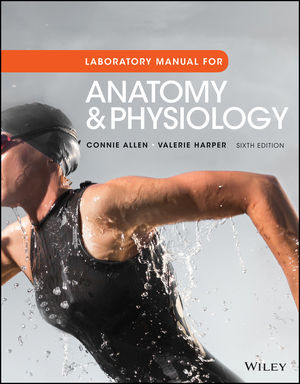
The Laboratory Manual for Anatomy and Physiology, 6th Edition
By Connie Allen and Valerie Harper
The Laboratory Manual for Anatomy and Physiology, 6th Edition contains dynamic and applied activities and experiments that help students both visualize anatomical structures and understand complex physiological topics. Lab exercises are designed in a way that requires students to first apply information they learned and then critically evaluate it. With many different format options available along with powerful digital resources, it’s easy to customize this laboratory manual to your course.
The next generation of WileyPLUS for the Laboratory Manual for Anatomy and Physiology gives instructors the freedom and flexibility to tailor content and easily manage their course to keep students engaged and on track.
Schedule a Demo Sign Up for a Test Drive Adopt WileyPLUSWant to learn more about WileyPLUS? Click Here
Physiological simulations reinforce techniques used in the laboratory.
PowerPhys 3.0 simulation software allows users to explore physiology principles through 14 self-contained activities. Each activity includes objectives with illustrated and animated review material, pre-lab quizzes, pre-lab reports, data collection and analysis, and a full lab report with discussion and application questions. Experiments contain randomly generated data, allowing users to experiment multiple times but still arrive at the same conclusions.

Students practice on a real cadaver from the comfort of their own computer.
Real Anatomy 2.0 3-D imaging software lets students dissect through over 40 layers of a real human body to study the anatomical structures of all body systems. Students also have access to cat, fetal pig, and rat dissection videos, which provide step-by-step directions for dissecting these animals.
- Concept Lectures: Created by author Mark Nielsen, these lectures provide a great resource for instructors who want to incorporate more of a flipped classroom into their teaching. Video lectures are a dynamic way to help students focus on key concepts and patterns in anatomy.
- 3-D Animations: 3-D Physiology is an animation series that breaks down the most difficult physiological concepts for you to teach and your students to learn. Five new animations are available on topics like membrane transport and adaptive immunity.
- Self-Contained Lab Exercises: These exercises include terminology and art that are consistent with Principles of Anatomy and Physiology by Gerard Tortora and Bryan H. Derrickson
- Lab Reporting: Reviewing Your Knowledge sections and Using Your Knowledge reports ask students to review and apply the information learned. These are available as auto-graded question banks to assign to your students in the next generation of WileyPLUS.21
What’s New
Lab Manual for Anatomy and Physiology, 6th Edition enhancements include:
1. Anatomical Language
2. Organ Systems and Body Cavities
3. Compound Light Microscope
4. Cell Structure and Function
5. Transport Across the Plasma Membrane
6. Tissues
7. Integumentary System Structure and Function
8. Bone Structure and Function
9. Axial Skeleton
10. Appendicular Skeleton
11. Joints and Synovial Joint Movements
12. Skeletal Muscle Structure
13. Contraction of Skeletal Muscle
14. Skeletal Muscles and Their Actions
15. Surface Anatomy
16. Nervous Tissue
17. Spinal Cord Structure and Function
18. Spinal Nerves
19. Somatic Reflexes
20. Brain Structure and Function
21. Cranial Nerves
22. Autonomic Nervous System Structure and Function
23. General Senses
24. Special Senses
25. Endocrine Structure and Function
26. Blood Components and Blood Tests
27. Heart Structure and Function
28. Cardiac Cycle
29. Blood Vessel Structure and Function
30. Blood Vessel Identification
31. Lymphatic System Structure and Immune System Function
32. Respiratory System Structure and Function
33. Pulmonary Ventilation
34. Digestive System Structure and Function
35. Chemical Digestion
36. Urinary System Structure and Function
37. Urine Formation and Urinalysis
38. Male Reproductive System Structure and Function
39. Female Reproductive System Structure and Function
40. Human Development
41. Heredity

